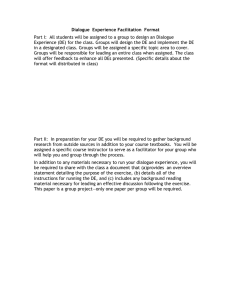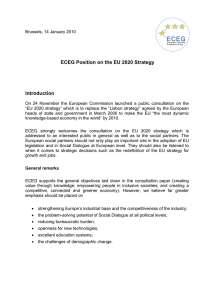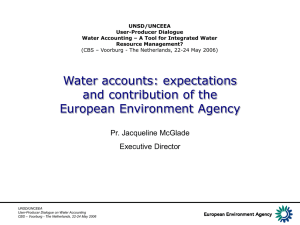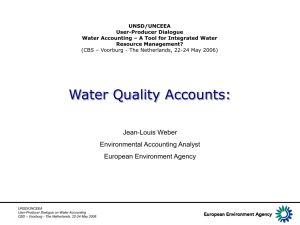The case of the Netherlands
advertisement
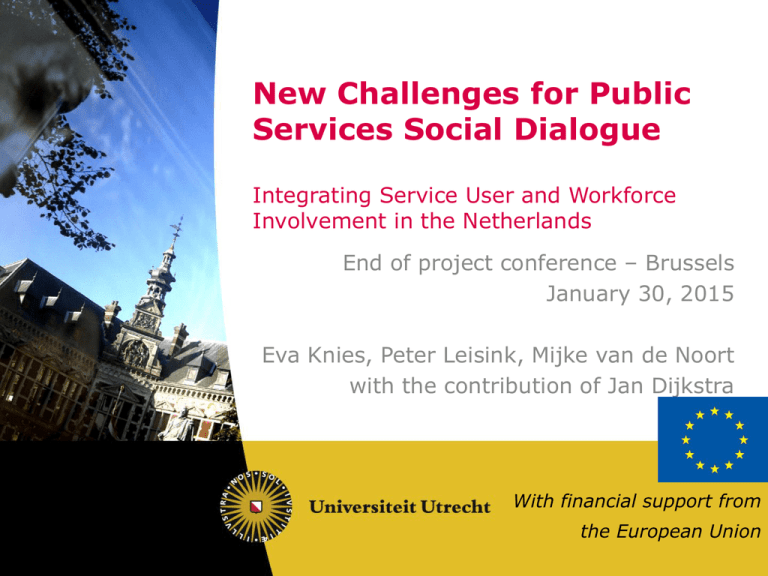
New Challenges for Public Services Social Dialogue Integrating Service User and Workforce Involvement in the Netherlands End of project conference – Brussels January 30, 2015 Eva Knies, Peter Leisink, Mijke van de Noort with the contribution of Jan Dijkstra With financial support from the European Union Integrating service user & workforce involvement in the Netherlands • User involvement and its relationship with social dialogue in the hospital and school sectors in the Netherlands • Our analysis is based on: – Interviews with representatives of the stakeholders at national level: government ministries, employer associations, trade unions, and user organizations – Interviews with representatives of the stakeholders in one hospital and one school for secondary education – Documents of the organizations that took part in this study, policy reports, earlier studies and relevant scientific literature Drivers of user involvement • ‘User’: narrow and broad understanding – Narrow: patient (health), student and parent (education) – Broad: citizens in general (accessible and high-quality services) • Interest in user involvement has increased since 1990s; NPM: focus on quality of service, performance and customer approach • Health – Cost reduction, increasing number of chronically ill patients – Government: user involvement to promote co-production of effective services and to stimulate a critical counterforce • Education – Need for good governance – Incidents (financial mismanagement) Forms of user involvement • User involvement is highly institutionalised • National level – Health: patient organisations very influential actor – Education: national action committee of students (LAKS) influential position • Organisational level – User involvement is regulated through laws strengthening the position of individual users (e.g. right to file complaint) – Health: client council mandatory; Arnstein: informing and consultation (resulting in advice) – Education: parents and students represented in school councils; Arnstein: informing and consultation, and partnership through rights of approval Social dialogue & user involvement • Social dialogue and user involvement are separate domains and employee issues and user issues are disconnected – Unions: employment interests – Patient and student organisations: quality of care/education • Even when there is a joint table, stakeholders focus on their own interests and respect the others’ legitimate domain • Conflict is rare • In theory both stakeholders recognize that employee participation and user involvement might strengthen each other • In practice coalitions are rare and are engaged only in a pragmatic way A new challenge for public services dialogue? No … from the prevalent union perspective which concentrates on employment interests Yes … seen from the perspective of improving the accessibility and quality of public services Overview 320,000 patients/year; 2,500 employees •Active client council: representing the client perspective –8 members, appointed by board of directors –Different backgrounds •Works council: 15 members, no doctors •Openness & transparency, only 3 management levels, informal culture •Involvement is the norm; management: added value of participation Client Council •Client council mandatory (citizens, patients, family members): representative of clients of the hospital •Right to information, consultation, advice on: –Changes in the mission or goals, mergers, relocations, changes in organizational structure, budget –Improvement of quality of care –Quality of food, safety and recreation –Appointment members of Board of Directors •Power and influence of client council varies considerably Work together Patient satisfaction –Yearly patient satisfaction survey –Panel discussions –Meetings management and client council (formal and informal) Client council and works council –Common ground: patient satisfaction & quality of care –Issues that affect both: •E-health •Office hours & “SMALL QUALITY” matters
